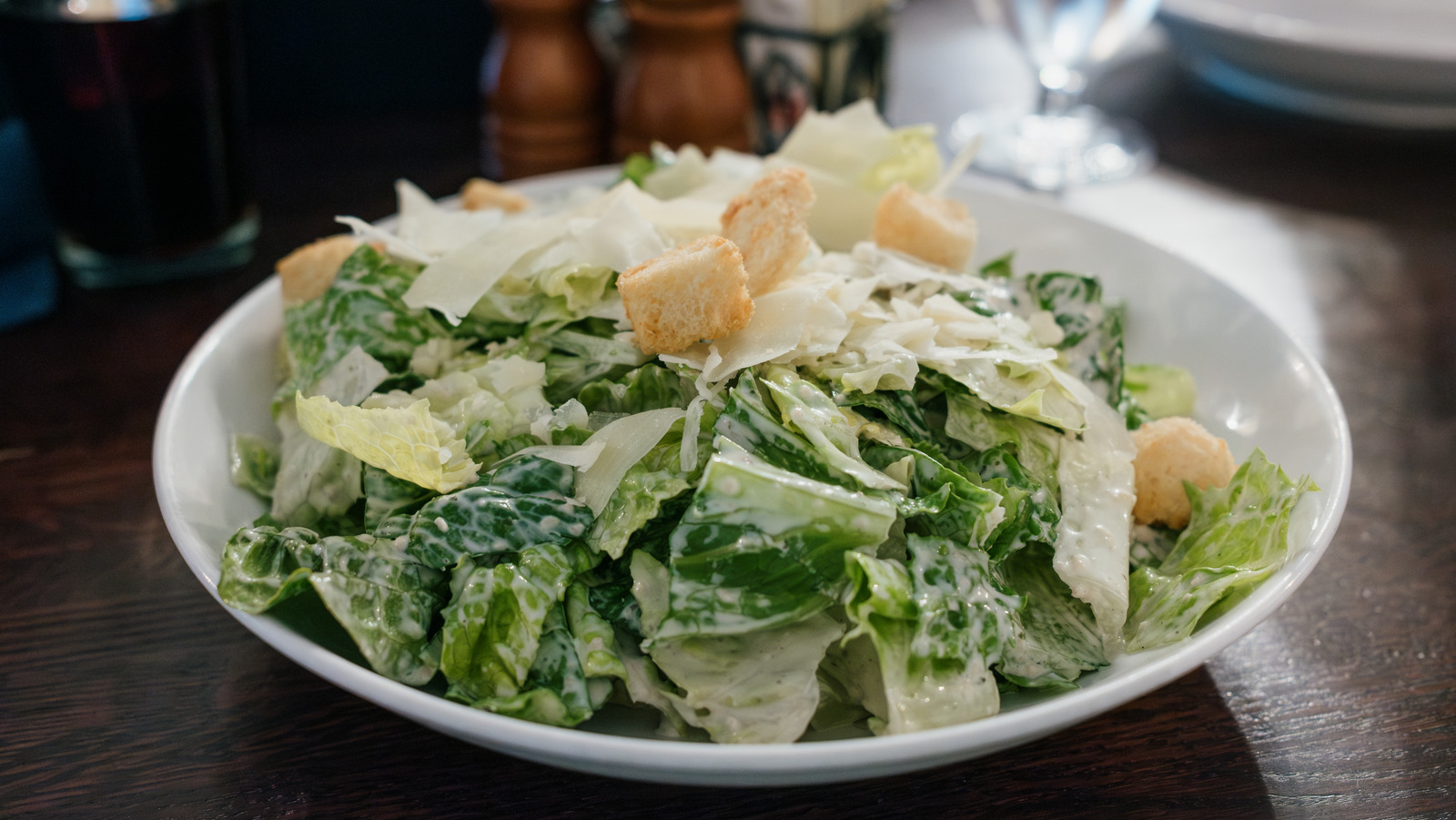The “why does this taste so amazing,” question with restaurants drives almost everyone a little mad at some point, no matter how good of a home cook you are, but with things as seemingly simple as a Caesar salad, the question gets that much more vexing. Certainly part of it has to do with the fact restaurants are usually working with fresher, higher-quality ingredients than you are. And the reality is that even the best premade bottled dressing isn’t going to compare to dressing that was made fresh. Still, even when you shell out for the good stuff, and make it fresh yourself at home before dressing your salad, you might still not be getting those restaurant-quality results. So we reached out to an expert, Jasper J. Mirabile Jr. the owner and chef at Jasper’s Restaurant and the host of Live! From Jasper’s Kitchen Radio, to ask how he makes a great Caesar salad.
Advertisement
Mirabile attributed the flavor of a great restaurant Caesar salad to its fresh in-the-moment preparation, telling us, “It was traditionally prepared tableside and mixed by hand, relying on the Worcestershire sauce to provide depth of flavor rather than mustard.” And it’s not only being made by hand but also how it was made. Mirabile explained that it is all based around “the seasoned wooden bowl and the artistic ability of mashing the garlic and anchovies into a perfect paste.”
Restaurants’ Caesar salads use fresh dressing made from hand mashed garlic and anchovies
As Jasper Mirabile tells us, the traditional Caesar salad was only flavored with parmesan cheese and olive oil, lemon juice, egg, and Worcestershire sauce, with no mustard. So how does making it by hand make it so much more tasty? It all has to do with the mashing. Pounding food releases more flavor molecules from ingredients than other methods of preparation like slicing or blending. This is because crushing food’s cells completely ruptures them instead of just cutting them up, and all those delicious compounds and aromas come pouring out, making for a more intense flavor, even with the same quality ingredients.
Advertisement
And while Mirabile explained that the original Caesar salad recipe, created by Caesar Cardini in the 1920s, did not contain mustard, he isn’t against using it. “I do prefer the variation of adding Dijon mustard to help the egg emulsify the dressing,” he said. Mixing the dressing by hand can also help with the emulsification process, as using tools like a mortar and pestle creates a creamier, more stable emulsion than using tools like food processors. So while you might think restaurants are using a lot of fancy tools you don’t own, sometimes it’s actually the application of simple old-fashioned techniques that makes the biggest difference. But the good news is that knowing this now, it should also be easy to apply Mirabile’s knowledge to your next Caesar salad.
Advertisement



